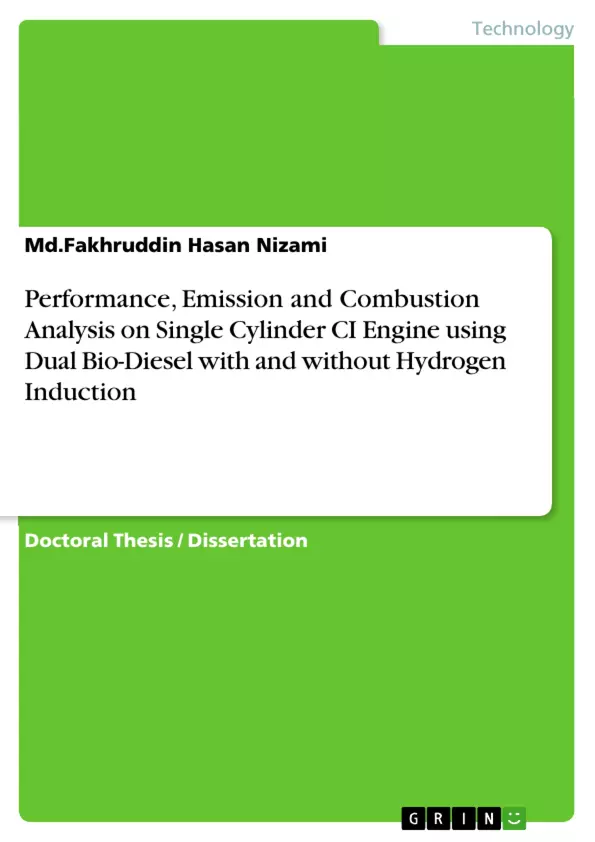The growing demand and low production of indigenous crude along with inadequate refining capacity has forced India to look for alternative fuels to sustain the economic development. India is one among the largest petro-diesel consuming and importing country i.e. about 70% of its demand. Violently fluctuating world prices of oil have been a destabilizing element for the balance of country’s economy and external debt. Centralized power generation are insufficient to encounter energy necessities of decentralized population of rural area, due to low loads, long distribution lines, power shortages, low and fluctuating voltage and low reliability. Decentralized system using renewable sources of energy could go a long way in meeting the energy needs of the decentralized communities.
Main source of economy in our country is irrigation. Irrigation has to be developed on a great measure, which requires energy to run various implements. The higher use of petrol/diesel in agronomy and transport sector has resulted in environmental degradation. Alternate fuels are being explored world-wide to reduce environmental pollution. To reduce the reliance on petroleum based fuels, bio-diesels are gaining attention world-wide.
In this research work diesel is blended with treble alternate fuels i.e. dual biodiesel and a biofuel, comprising waste cooking oil biodiesel, palm stearin biodiesel and hydrogen, which are tested on single cylinder CI engine for performance, emission and combustion Analysis. Compression ratio and injection opening pressure are varied to get best performance, emission and combustion characteristic.
At first dual biodiesel (WCOBD + PSBD) blended in diesel for different proportion will be tested in comparison with diesel as standalone fuel for different compression ratios and fuel injection pressures, then the best biodiesel-diesel proportion so obtain will be further tested with hydrogen at different rate of induction for performance and emission, optimal treble bio-fuel will be evaluated for combustion characteristic.
Inhaltsverzeichnis (Table of Contents)
- Chapter 1: Introduction
- 1.1: Introduction
- 1.2: Literature Review
- 1.3: Problem Statement
- 1.4: Objectives
- 1.5: Scope and Limitations
- 1.6: Methodology
- 1.7: Thesis Outline
- Chapter 2: Experimental Setup and Procedure
- 2.1: Engine Specification and Modifications
- 2.2: Fuels and Fuel Properties
- 2.3: Experimental Setup
- 2.4: Instrumentation and Data Acquisition
- 2.5: Experimental Procedure
- Chapter 3: Performance Analysis
- 3.1: Brake Power and Specific Fuel Consumption
- 3.2: Thermal Efficiency and Volumetric Efficiency
- 3.3: Air Fuel Ratio and Exhaust Gas Analysis
- Chapter 4: Emission Analysis
- 4.1: Carbon Monoxide (CO)
- 4.2: Nitrogen Oxides (NOx)
- 4.3: Hydrocarbon (HC)
- 4.4: Particulate Matter (PM)
- Chapter 5: Combustion Analysis
- 5.1: Combustion Duration and Ignition Delay
- 5.2: Heat Release Rate and Combustion Phases
- 5.3: Cylinder Pressure and In-Cylinder Temperature
- Chapter 6: CFD Analysis
- 6.1: Computational Fluid Dynamics (CFD) Modeling
- 6.2: Validation of CFD Results
- 6.3: Effect of Hydrogen Induction on Combustion
- Chapter 7: Economic Analysis
- 7.1: Cost Analysis of Biodiesel Production
- 7.2: Economic Feasibility of Using Dual Biodiesel
- 7.3: Environmental Impact Assessment
- Chapter 8: Conclusion
Zielsetzung und Themenschwerpunkte (Objectives and Key Themes)
This research aims to evaluate the performance, emission, and combustion characteristics of a single-cylinder CI engine fueled with dual biodiesel blends and hydrogen induction. The research aims to explore the potential of alternative fuels in reducing reliance on petroleum-based fuels and mitigating environmental impact.
- Performance analysis of dual biodiesel blends with and without hydrogen induction.
- Emission characterization of the engine fueled with various biodiesel blends.
- Investigation of the combustion process under different fuel conditions.
- Evaluation of the economic feasibility and environmental impact of using dual biodiesel blends.
- Comparative analysis of the experimental results with CFD simulation for validation.
Zusammenfassung der Kapitel (Chapter Summaries)
Chapter 1 introduces the research topic, outlining the motivation, problem statement, objectives, and scope. It presents a comprehensive review of existing literature related to alternative fuels and their impact on engine performance and emissions.
Chapter 2 details the experimental setup and procedure used throughout the study. This includes engine specifications, fuel properties, instrumentation, data acquisition, and the experimental protocol followed for testing.
Chapter 3 focuses on analyzing the performance characteristics of the engine under various fuel conditions. This chapter evaluates parameters such as brake power, specific fuel consumption, thermal efficiency, and volumetric efficiency.
Chapter 4 investigates the emission characteristics of the engine, analyzing the levels of CO, NOx, HC, and PM emitted under different fuel blends. The chapter examines the influence of dual biodiesel blends and hydrogen induction on emissions.
Chapter 5 delves into the combustion analysis of the engine, examining parameters like combustion duration, ignition delay, heat release rate, and cylinder pressure. This chapter analyzes the combustion process and its variations with different fuel conditions.
Chapter 6 presents the results of the CFD analysis, validating the experimental findings and further examining the effect of hydrogen induction on the combustion process. The chapter analyzes the flow patterns and heat transfer within the engine cylinder.
Chapter 7 assesses the economic feasibility and environmental impact of using dual biodiesel blends. The chapter analyzes the cost of biodiesel production, the economic benefits of using these blends, and the environmental implications of reducing reliance on fossil fuels.
Schlüsselwörter (Keywords)
The key terms and focus topics of this thesis include single-cylinder CI engine, dual biodiesel, hydrogen induction, performance analysis, emission characterization, combustion analysis, CFD simulation, economic feasibility, and environmental impact. The research explores the utilization of alternative fuels for sustainable engine operation while minimizing environmental pollution.
- Quote paper
- Md.Fakhruddin Hasan Nizami (Author), 2019, Performance, Emission and Combustion Analysis on Single Cylinder CI Engine using Dual Bio-Diesel with and without Hydrogen Induction, Munich, GRIN Verlag, https://www.grin.com/document/1192152



